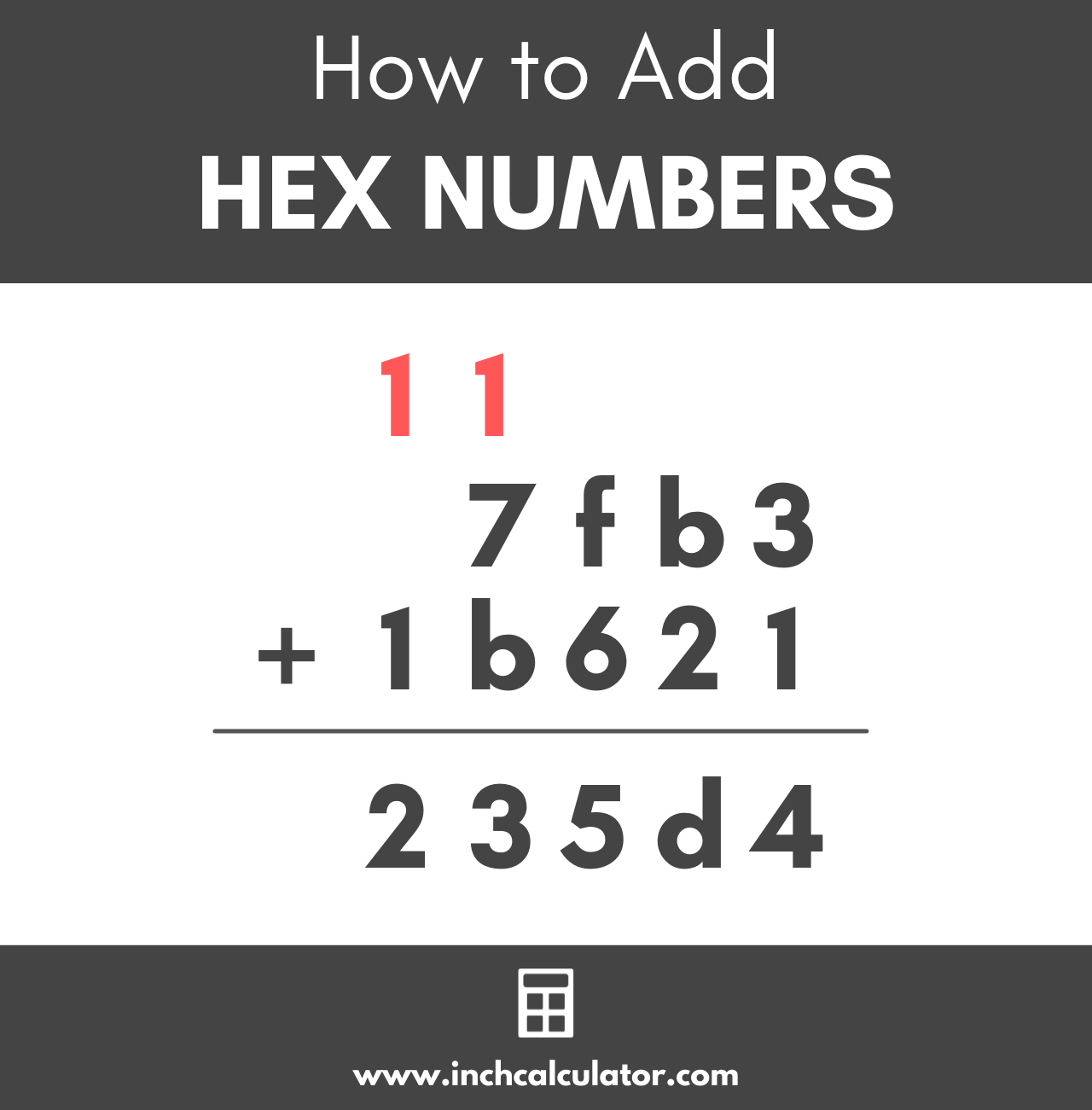Hexadecimal Calculator & Converter
Add, subtract, multiply, divide, or convert hexadecimal numbers using the hex calculator below.
Hexadecimal Result:
Decimal Result:
Binary Result:
Decimal Result
Binary Result
Octal Result
On this page:
How to Add Hexadecimal Numbers
Unlike the decimal system, which is a base 10 number system, the hexadecimal (or hex) system is a base 16 number system and uses the digits 0 through 9 and a through f.
Adding hex numbers is very similar to adding decimal numbers.

To add two hex numbers, write the second number below the first number, aligning the right digits like this:
| 7 | f | b | 3 | ||
| + | 1 | b | 6 | 2 | 1 |
Starting at the right-most number, add the top and bottom values together. In this case, 3 + 1 is equal to 4.
| 7 | f | b | 3 | ||
| + | 1 | b | 6 | 2 | 1 |
| 4 |
Then, continue with the second number from the right; b + 2 is equal to d. The digit b in hex is equal to the decimal value of 11, and d is equal to 13. You can also increment the letter by 2 letters.
| 7 | f | b | 3 | ||
| + | 1 | b | 6 | 2 | 1 |
| d | 4 |
Moving on to the third number from the right, f + 6 is equal to 15. In our problem, regroup the leading 1 to the top of the problem over the preceding column of digits and move the trailing 5 to the bottom.
| 1 | |||||
| 7 | f | b | 3 | ||
| + | 1 | b | 6 | 2 | 1 |
| 5 | d | 4 |
In the next step, add the 1 at the top of the next column with the other values; 1 + 7 + b is equal to 13 in hex. You’ll need to carry the 1 to the top again and the 3 to the bottom like this:
| 1 | 1 | ||||
| 7 | f | b | 3 | ||
| + | 1 | b | 6 | 2 | 1 |
| 3 | 5 | d | 4 |
The final step is to add the 1 that you just placed at the top with the 1 on the bottom number, which is equal to 2. Therefore, the answer is 235d4.
| 1 | 1 | ||||
| 7 | f | b | 3 | ||
| + | 1 | b | 6 | 2 | 1 |
| 2 | 3 | 5 | d | 4 |
How to Convert a Hex Number
To convert a hexadecimal number to decimal, use the following formula:
decimal number10 = (d0 × 160) + (d1 × 161) + … + (dn – 1 × 16n – 1)
In the formula above, d0 is the hex digit furthest to the right, d1 is the digit one position from the right, and dn – 1 is the digit furthest to the left.
Frequently Asked Questions
How do hexadecimal numbers work?
The hexadecimal number consists of digits 0, 1, 2, 3, 4, 5, 6, 7, 8, and 9, followed by A, B, C, D, E, and F. It is a base 16 number system.
How do decimal places work in hex?
While digits to the right of the decimal point in the decimal system can have a value of tenths, hundredths, etc. In the hex system they have a value of sixteenths, 256ths, etc.
What is hexadecimal used for?
The hexadecimal system is most often used in computer science and programming since it is easier to convert to binary than decimal is.


